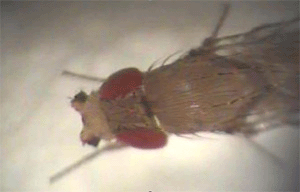Genome comparison of twelve fruit fly species

The research, published in Nature, was carried out by a consortium of 200 researchers from all over the world and consisted in the analysis of the genome of twelve species of Drosophila, or fruit flies. The genome sequence of one of the species, D. melanogaster, was completed in 2000; while the sequence of another (D. pseudoobcura) was completed in 2005. The remaining ten, which were recently completed and are described now for the first time, are the D. simulans, D. sechellia, D. yakuta, D. erecta, D. ananassae, D. persimilis, D. willistoni, D. virilis, D. mojavensis, and D. grimshawi.
It is the first time that a comparison of genomes has been carried out with twelve closely related species, each representing distinct lineages within the phylogenetics of the Drosophila genus (which contains over 2000 different species). The evolutionary distance between them varies from one million years (between the closest species) to up to sixty million years (between the most distance species). In the comparative analysis, 1193 new genes were discovered and 414 previously catalogued genes were corrected. Researchers also verified that the genomes of all twelve species are similar in size and contain approximately the same number of genes, some 14,000.
Alfredo Ruíz, Bàrbara Negre, Mar Marzo and Marta Puig, from the UAB Genomics, Bioinformatics and Evolution Group, participated in the research project. According to these researchers, the comparative analysis of multiple genomes within a phylogenetic context largely improves the levels of precision and sensibility of the evolutionary inferences. It also represents a significant step towards unlocking the secrets of evolution of living beings.
References
"Evolution of Genes and Genomes in the Context of Drosophila Phylogeny". Autor: Drosophila Comparative Genome Sequencing and Analysis Consortium. NATURE 450, 203-218 (8 November 2007).

